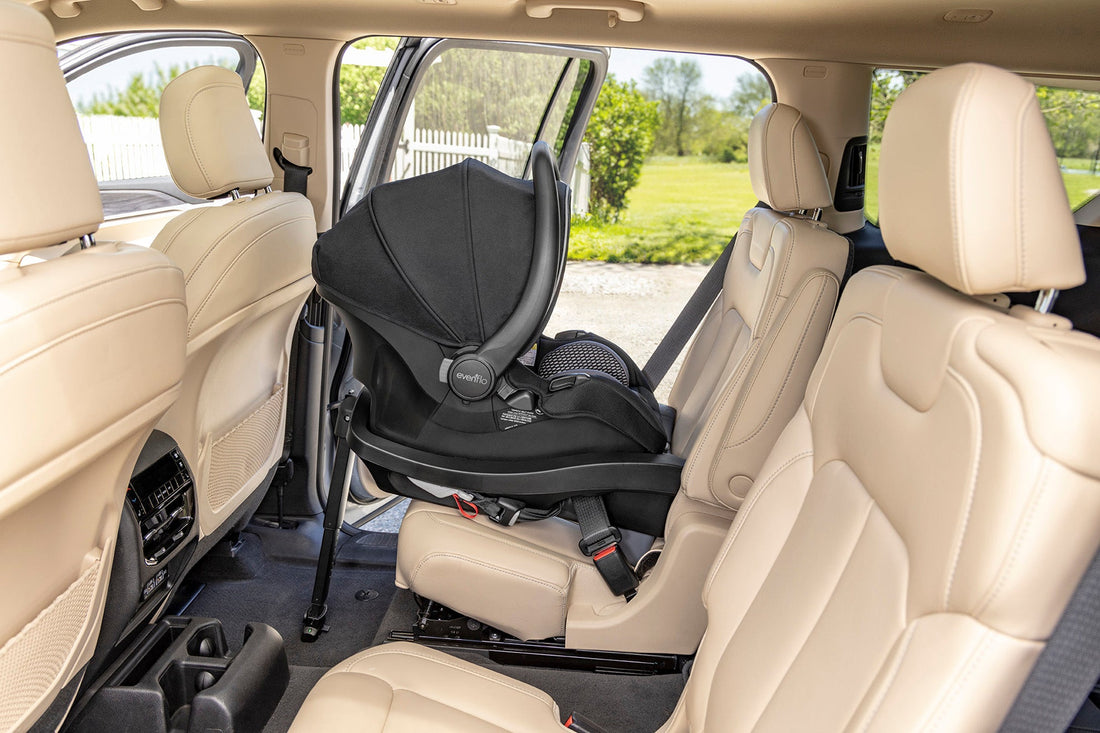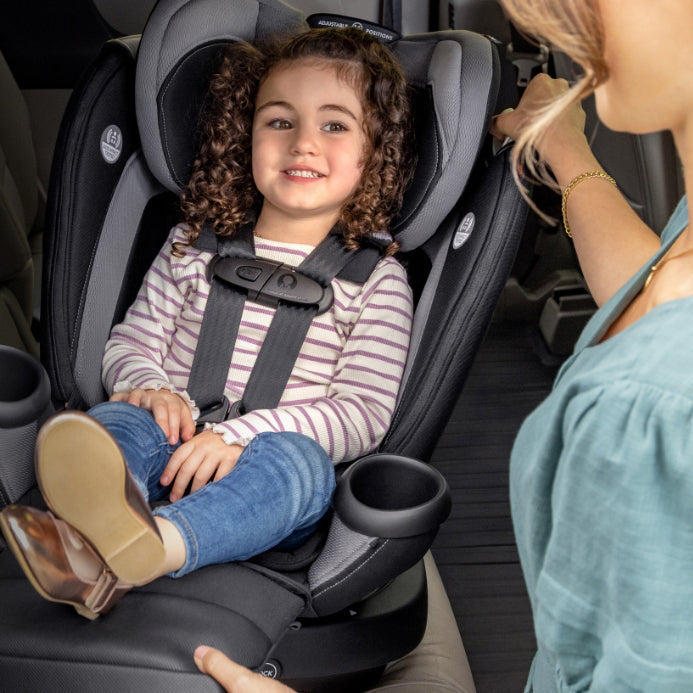
Evenflo Infant Car Seats and the 1.5 Inch Requirement
Have you heard of the 1.5 inch rule for car seats? If not, it’s time to listen up! Evenflo’s rear-facing only infant car seats require 1.5 in. of space between any part of the car seat and the back of a front seat when installed directly behind the driver or front passenger.
Here’s How That’s Written in Our Infant Car Seat Instruction Manuals
If you are unable to use the center seating position and have to install this child restraint directly behind a front vehicle seat, ensure that there is at least 38mm (1.5 in) of space between any part of the child restraint and the vehicle seat that is closest to the child's head. This space may be necessary for the child restraint to properly perform in certain types of crashes.
Okay, But What Exactly Does That Mean?
The 1.5 in. requirement is only applicable when your infant car seat is installed directly behind a front vehicle seat. The 1.5 in. rule does not apply if you install your infant car seat in the center of your back seat, where there is a gap between the front seats. Or, if you are using a convertible or all-in-one car seat in rear-facing mode — it’s okay for these to lightly touch the back of a front vehicle seat.
Why Does Evenflo Have This Requirement?
Long story short, safety is our number one priority, and should a crash happen, we want your little one to be protected!
In a crash, everything in the vehicle moves toward the point of impact. In a front-impact crash, everyone and everything in the vehicle moves towards the front of the vehicle. Your seat belt, air bags and other safety systems help to manage the crash energy. In a rear-impact crash, the opposite happens — everyone and everything moves toward the rear of the vehicle. In rear-impact crashes at higher speeds, there’s potential for the front seat back to deform as the passenger is pulled toward the rear of the vehicle.
If a vehicle experiences a seat back deformation during a crash, it may come into contact with the rear passenger, or in this case, your car seat. We require 1.5 in. of space between the infant car seat and the front vehicle seat so that in the event of a rear-impact crash, the infant car seat will have the opportunity to rotate away from the front vehicle seat, providing clearance if the seat back deforms.
How Do You Know if You Have the Right Amount of Space?
Find the part of your infant car seat that is closest to the front vehicle seat and measure forward until you touch the vehicle seat back. Don’t have a tape measure? A couple of common items you may find in your vehicle, including the blade of your house key and the length of many wireless ear buds, are roughly 1.5 in. long. Additionally, your child’s harness webbing is exactly 1.5 in. wide. Place your fingers over the webbing to approximate the width and use that to test for this space.
Of course, if you have any questions about your Evenflo car seat installation, please reach out to our ParentLink Resource Center for real time chat support or free live video installation service. Look for ParentLink at Evenflo.com.
Can a Rear-Facing Infant Car Seat Touch the Front Seat?
No, a rear-facing infant car seat cannot touch the front seat.
YOU MAY ALSO LIKE:
